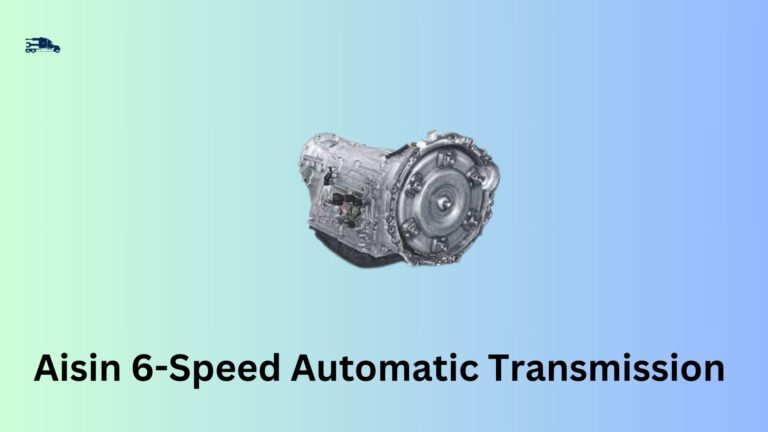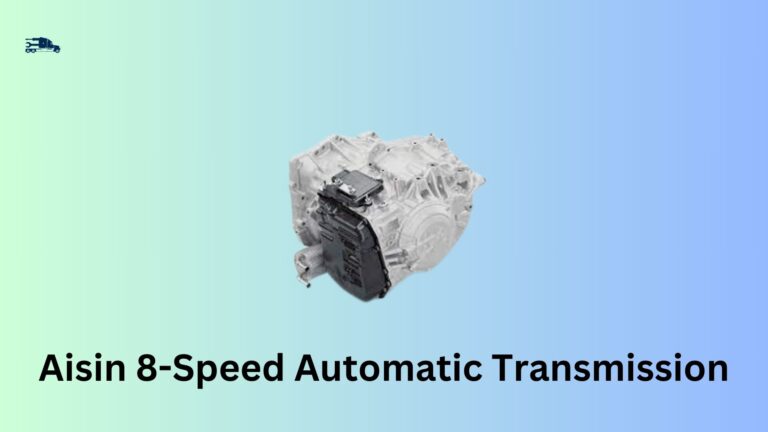Are you experiencing troubles with your Aisin automatic transmission? Don’t worry, you’re not alone! Aisin automatic transmission problems can be frustrating, but understanding the common issues and their causes is the first step towards finding a solution. In this blog, we’ll delve into these problems, provide tips for prevention and maintenance, and guide you through troubleshooting steps. So, let’s gear up and get started!
Table of Contents
10 Common Aisin Automatic Transmission Problems
Facing issues with your Aisin automatic transmission? You’re not alone! Understanding the most prevalent problems can help you tackle them effectively. Let’s take a closer look at some common Aisin automatic transmission problems and their potential impact:
1. Valve Body Issues
The valve body is a critical component responsible for controlling the flow of transmission fluid. Over time, it can develop problems, leading to issues such as delayed engagement, harsh shifts, or erratic gear changes. These problems can affect the overall performance and smooth operation of your transmission.
2. Clutch Problems
Clutches are vital for transmitting power between different gears. When they wear out or become damaged, you may experience slipping gears, difficulty in shifting, or a loss of power. Clutch problems can significantly impact the drivability and performance of your vehicle.
3. Whining or Grinding Noises
Unusual noises, such as whining or grinding sounds, can be indicative of internal transmission problems. These noises may occur during gear changes or when the transmission is under load. Ignoring these sounds can potentially lead to more severe damage to your transmission.
4. Loss of Power
Experiencing a sudden loss of power or a significant decrease in acceleration can be a sign of transmission trouble. This problem may stem from issues like slipping clutches, fluid contamination, or internal component failures. Prompt attention is crucial to prevent further damage and ensure safe driving.
5. Fluid Contamination
Contaminated transmission fluid can cause a range of issues. Dust, debris, or metal particles can accumulate in the fluid, leading to poor lubrication, overheating, and increased wear on internal components. Regular fluid checks and changes are essential to prevent fluid contamination and maintain transmission health.
6. Solenoid Issues
Solenoids play a crucial role in controlling the flow and pressure of transmission fluid. When solenoids malfunction, it can result in harsh shifting, gear slippage, or even complete transmission failure. Real-life examples include experiencing a delay in gear engagement or the transmission getting stuck in a particular gear.
7. Transmission Control Module (TCM) Failures
The TCM is responsible for managing the shifting, timing, and overall operation of the transmission. If the TCM fails or experiences glitches, you may encounter erratic shifting, difficulty in selecting gears, or even complete transmission failure. Real-life examples could be the transmission refusing to shift from one gear to another or getting stuck in “limp mode.”
8. Gear Engagement Problems
Issues with gear engagement can manifest as delayed engagement, slipping gears, or the transmission not going into the desired gear. These problems can arise due to worn-out clutch plates, hydraulic system malfunctions, or other internal component failures. Real-life examples include experiencing a delay or hesitation when shifting gears, or the transmission not engaging into gear at all.
9. TCM Communication Errors
Communication errors between the TCM and other control modules in the vehicle can cause transmission issues. These errors can result from faulty wiring, damaged connectors, or software glitches. Real-life examples include the transmission shifting unexpectedly or the TCM not receiving signals from other modules.
10. Sensor Failures
Various sensors in the transmission system provide critical information for smooth operation. When sensors fail or give inaccurate readings, it can lead to improper shifting, loss of power, or other transmission problems. Real-life examples could be the transmission slipping out of gear or the vehicle going into “limp mode” due to a faulty sensor.
Related articles:
47RH Transmission Problems
Aisin Seiki AS68RC Transmission Problems
2019 Ram 2500 Transmission Problems
Dodge Ram 3500 Transmission Problems
Ram 3500 Transmission Problems
RAM Aisin Transmission Problems
2023 Ram 3500 Aisin Transmission Problems
2022 Ram 3500 Aisin Transmission Problems
2020 RAM Aisin Transmission Problems
2021 Ram Aisin Transmission Problems
2019 Ram 3500 Aisin Transmission Problems
Signs and Symptoms of Aisin Automatic Transmission Problems
Experiencing issues with your Aisin automatic transmission? Don’t fret! Recognizing the warning signs is crucial for taking prompt action and preventing further damage. Here are some red flags to watch out for:
Unusual Noises, Vibrations, or Burning Smells
Listen carefully for any strange noises, such as grinding, whining, or clunking sounds. Unusual vibrations or a burning smell could also indicate transmission trouble. These signs often suggest internal components are wearing out or overheating.
Sluggish Acceleration and Poor Performance
If your vehicle struggles to pick up speed or exhibits a noticeable decrease in power, it could be a sign of transmission issues. Sluggish acceleration, a lack of response, or a delay in shifting gears may indicate a problem with your Aisin automatic transmission.
Dashboard Warning Lights and Error Codes
Pay attention to warning lights on your dashboard, especially the “Check Engine” light or any transmission-related indicators. Additionally, error codes retrieved using a diagnostic scanner can provide valuable insights into the specific issue affecting your transmission.
Fluid Discoloration and Abnormal Fluid Levels
Regularly check your transmission fluid’s color and level. Healthy transmission fluid is typically a clear, reddish color. If the fluid appears dark, cloudy or has a burnt odor, it may indicate contamination or overheating. Low fluid levels can also lead to transmission problems.
Transmission Slipping and Erratic Shifting Patterns
Transmission slipping occurs when your vehicle unexpectedly changes gears or struggles to stay in gear. You may notice a revving engine without a corresponding increase in speed. Erratic shifting, such as sudden jerks or delays between gear changes, is another common symptom of transmission issues.
Remember, recognizing these signs and symptoms is essential for addressing potential Aisin automatic transmission problems promptly. Ignoring them can lead to more severe damage and costly repairs. If you notice any of these warning signs, it’s best to consult a professional mechanic for a thorough diagnosis and appropriate repairs.
Prevention and Maintenance Tips
To ensure the longevity and optimal performance of your Aisin automatic transmission, it’s essential to follow some preventive measures and adopt good maintenance practices. Here are some practical tips to help you keep your transmission running smoothly:
Regular Fluid and Filter Changes
Regularly changing the transmission fluid and filter is crucial for maintaining a healthy transmission. Over time, the fluid can become contaminated with debris, leading to poor lubrication and increased wear. Follow the manufacturer’s recommendations for the appropriate fluid type and change intervals.
Proper Driving Techniques and Habits
Your driving habits can significantly impact the health of your transmission. Avoid aggressive driving, sudden acceleration, and abrupt gear changes. Allow the transmission to warm up before putting it under heavy load, especially in cold weather. Gentle and smooth driving can reduce stress on the transmission and prolong its lifespan.
Avoiding Excessive Loads and Overheating
Excessive loads, such as towing beyond the recommended capacity, can put undue strain on the transmission. Additionally, overheating can cause damage to internal components. Be mindful of the weight you’re carrying and avoid pushing your vehicle beyond its limits. Install additional cooling systems if necessary, especially for heavy-duty applications.
Timely Repairs and Addressing Minor Issues Promptly
Don’t ignore any signs of transmission trouble. If you notice unusual noises, slipping gears, or any other problems, have your transmission inspected and repaired promptly. Addressing minor issues early can prevent them from escalating into more significant and costly problems.
Consulting Professional Mechanics and Authorized Service Centers
When it comes to transmission maintenance and repairs, it’s crucial to rely on professional mechanics with expertise in Aisin transmissions. Seek out authorized service centers or technicians who are familiar with your vehicle’s specific transmission model. They have the knowledge and tools to diagnose and address transmission issues accurately.
Conclusion
Being aware of common Aisin automatic transmission problems and following preventive measures can save you from costly repairs and ensure a smoother driving experience. Regular maintenance, proper driving techniques, and timely repairs are key to keeping your transmission in top shape. Take care of your transmission, and it will take care of you on the road!






